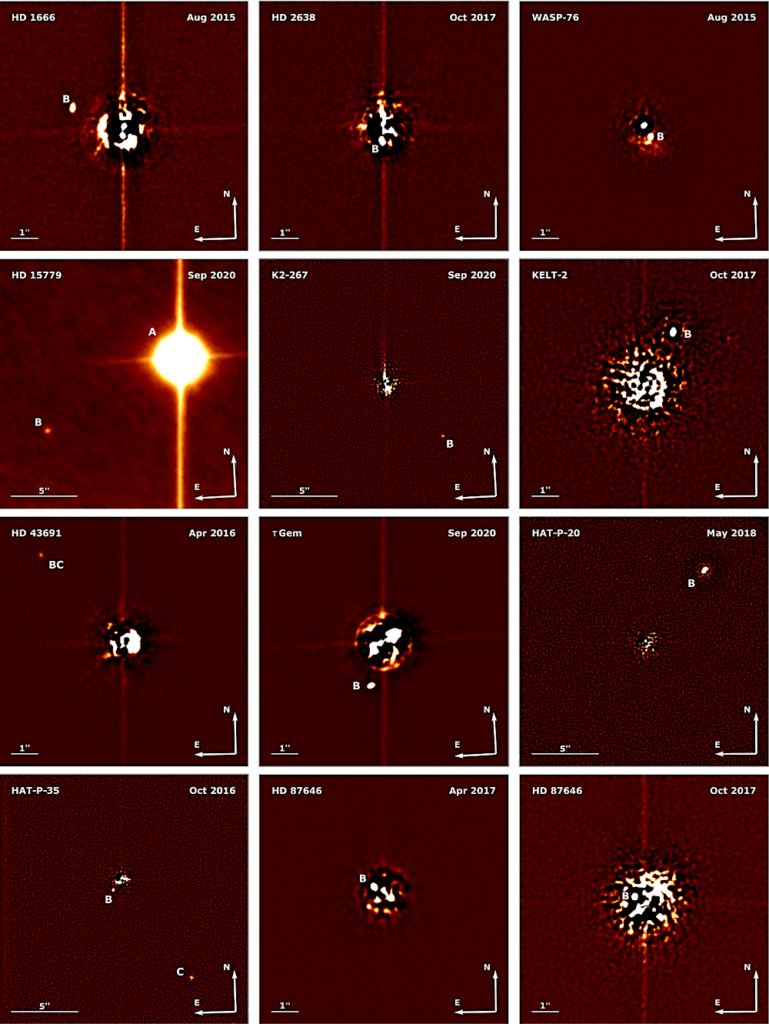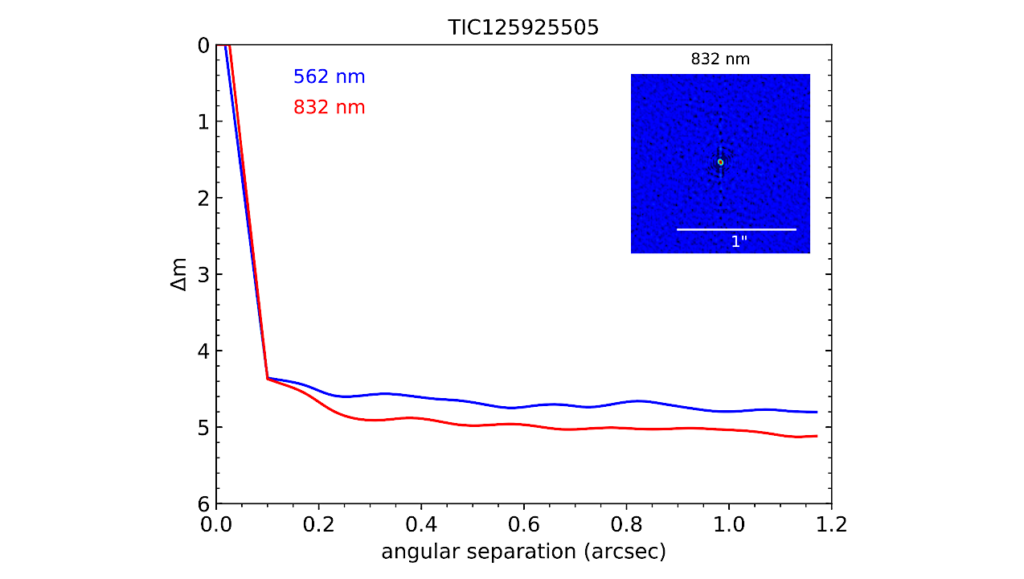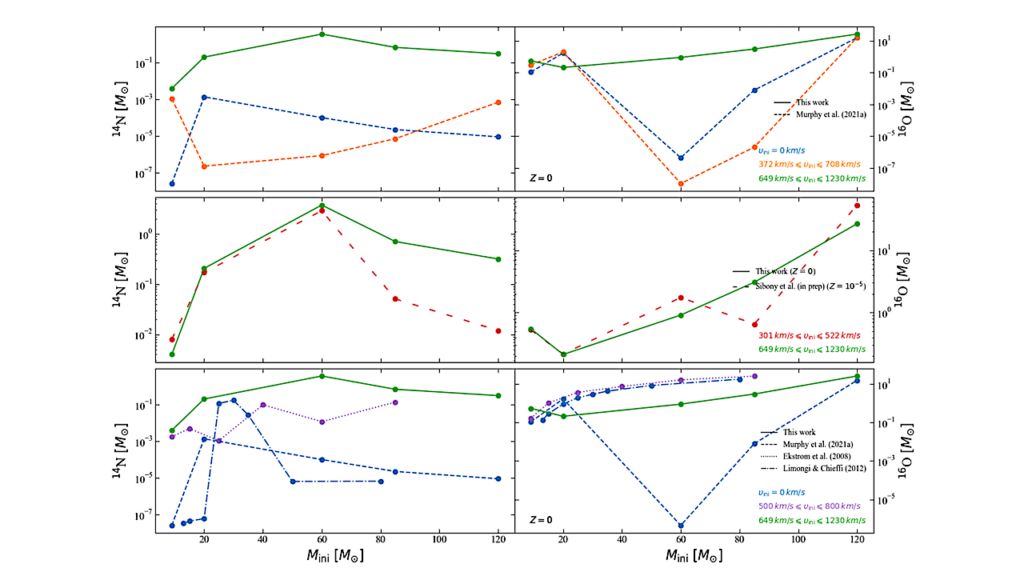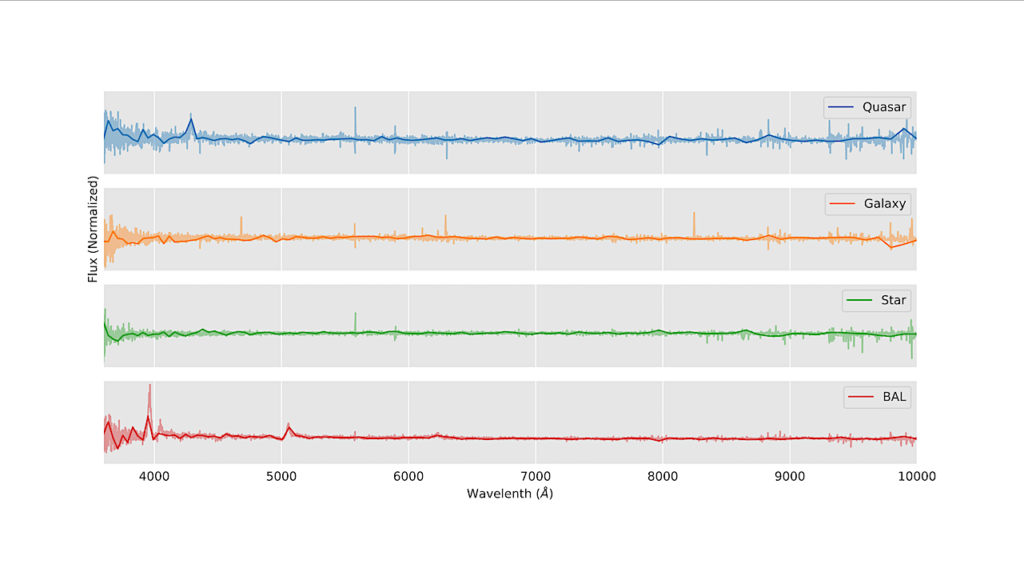Search For Stellar Companions Of Exoplanet Host Stars With AstraLux/CAHA 2.2 m

Stellar multiplicity is a key aspect of exoplanet diversity, as the presence of more than one star in a planetary system can have both devastating and positive effects on its formation and evolution.
In this paper, we present the results of a Lucky Imaging survey of 212 exoplanet host stars performed with AstraLux at CAHA 2.2 m. The survey includes data from seven observing epochs between August 2015 and September 2020, and data for individual targets from four earlier observing epochs. The targets of this survey are nearby, bright, solar-like stars with high proper motions. In total, we detected 46 co-moving companions of 43 exoplanet host stars. Accordingly, this survey shows that the minimum multiplicity rate of exoplanet host stars is 20 ± 3 %.
In total, 33 binary and ten hierarchical triple star systems with exoplanets have been identified. All companions were found to have a common proper motion with the observed exoplanet host stars, and with our astrometry we even find evidence of orbital motion for 28 companions. For all targets, we determined the detection limit and explore the detection space for possible additional companions of these stars. Based on the reached detection limit, additional co-moving companions beyond the detected ones can be excluded around all observed exoplanet host stars.
The increasing number of exoplanets discovered in multiple stellar systems suggests that the formation of planets in such systems is by no means rare, but common. Therefore, our study highlights the need to consider stellar multiplicity in future studies of exoplanet habitability.

Co-moving companions of exoplanet host stars (typically located in the center of all images unless otherwise indicated) detected with AstraLux in this survey. Except for the images of HD 15779, γ Leo, WASP-85, HD 132563, and HD 176551, the PSF of the exoplanet host star is subtracted and the images are spatially high-pass filtered. — astro-ph.EP
S. Schlagenhauf, M. Mugrauer, C. Ginski, S. Buder, M. Fernández, R. Bischoff
Comments: 20 pages, 9 figures, 13 tables, accepted for publication in MNRAS
Subjects: Earth and Planetary Astrophysics (astro-ph.EP); Solar and Stellar Astrophysics (astro-ph.SR)
Cite as: arXiv:2402.12299 [astro-ph.EP] (or arXiv:2402.12299v1 [astro-ph.EP] for this version)
https://doi.org/10.48550/arXiv.2402.12299
Focus to learn more
Submission history
From: Markus Mugrauer
[v1] Mon, 19 Feb 2024 17:23:46 UTC (10,465 KB)
https://arxiv.org/abs/2402.12299
Astrobiology,








